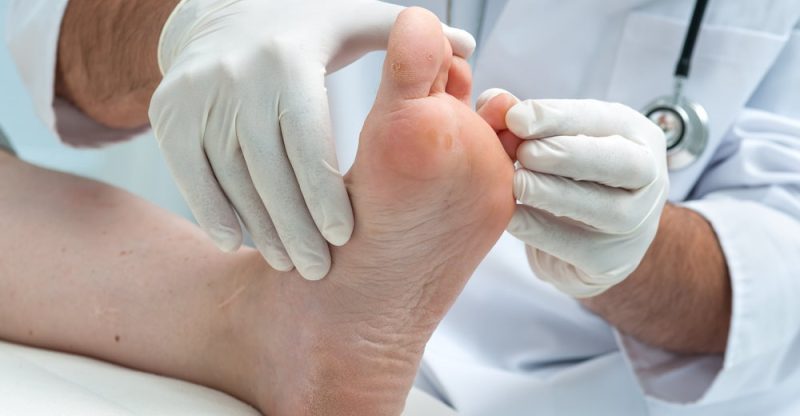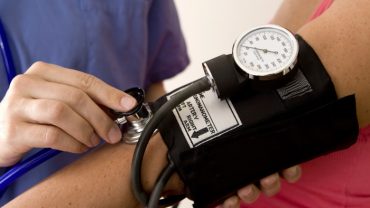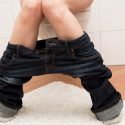Athlete’s Foot Signs and Natural Treatments
A common fungal infection that may cause itching and burning, athlete’s foot is a ubiquitous problem. Here are some of the most basic signs you should look for to know if you have it:
-Swelling around your toes or in between them.
-An oozing, fluid-like discharge from under your nails or on top of your skin.
-.A white coating is visible on the soles of feet.
It can be caused by several things, including poor hygiene and wearing too-tight shoes, but there are also natural treatments for the condition.
Every year, 3–15 percent of the population is affected by athlete’s foot. It’s one of the most frequent fungal diseases that people get. Symptoms will most likely appear in up to 25% of persons (1 in 4).
Athlete’s foot has certain characteristics with other fungal illnesses you’ve undoubtedly encountered in the past. Toenail fungus, jock itch, candida or other yeast infections, oral thrush, ringworm, and even meningitis are among them. What causes the spread of foot fungus and other fungal illnesses throughout the body? Sweaty or unclean feet and working out in a commonplace are two of the reasons. Another reason is wearing thick, durable shoes that prevent air from reaching the toes. According to research, men are more prone than women to acquire athlete’s foot on one or both feet.
It’s conceivable that athlete’s foot symptoms may go away on their own. However, most patients need therapy to alleviate the itching, flaking, and redness that they feel. Making a DIY antifungal cream with essential oils is one of the home cures for athlete’s foot. Avoid potentially dangerous circumstances, such as going barefoot in public showers. Boost your immune system to make it easier to fight off microorganisms of all kinds.
What Is Athlete’s Foot?
Athlete’s foot is an infection that affects the toes or feet. The infection is caused by fungi (tinea pedis). This fungus feeds mostly on keratin, a protein present in the skin. Keratin may be found in the top layer of the skin and other parts of the body, such as hair strands.
Athlete’s foot symptoms are most common in the following areas of the body:
- Between the toes are the gaps. Most patients will experience symptoms in the space between their little toe and the toe next to it.
- If you have moccasin athlete’s foot, it will be throughout the bottom of your foot and the soles and heels.
Symptoms and Signs
The following are the most prevalent symptoms of athlete’s foot:
- Itching and burning in the area of the toes.
- Toes with cracked, ripped, or flaky skin that seems to be exceedingly dry.
- It’s possible that your skin could become white or that you’ll develop redness around your toes. The skin between the toes may look green in severe instances of athlete’s foot.
- Swelling, skin thickening, heat, and soreness are possible side effects. When the infection is deeper and more serious, the swelling becomes greater.
- The feet can have a “stinky” odor.
- In severe instances of athlete’s foot, ulcers or blisters might emerge, albeit these are uncommon. In the case of moccasin athlete’s foot, these blisters appear on the bottom of the feet.
- If left untreated, it may spread to the toenails and the hands and fingers. Symptoms include nail discoloration, chipping, irritation, redness, and, in rare cases, a bacterial infection.
Causes and Risk Factors
Dermatophytes are little fungi that cause athlete’s foot and other fungal illnesses. Dermatophytes invade the skin’s top layer via microscopic fractures or holes. This is one of the reasons why flaky, cut, or scraped skin is more susceptible to infections. This includes fungal infections and staph infections, and other bacterial illnesses. Athlete’s foot is caused by a fungus that may be passed from person to person. It may live on the bottoms of showers and bathtubs, sports equipment, socks, and shoes, among other things.
The following are the most significant risk factors for athlete’s foot:
- Walking barefoot on germ-infested surfaces, such as workout mats, gym floors, etc. When your feet are sweaty, you’re more prone to take up and retain fungus or germs.
- Not thoroughly cleaning the feet and toes. This is particularly crucial after being barefoot in a public location (including a gym or pool). It’s especially crucial if your feet sweat a much.
- Showering in public showers, such as those found in university dorms, barefoot.
- Getting manicure treatments at a salon where the equipment that comes into contact with people’s feet isn’t sterilized. The fungus may be carried from one person to another on unsterilized equipment.
- Wearing socks and shoes without allowing air to reach the feet for most of the day. In wet, moist, and warm settings, such as the inside of shoes, fungus and bacteria thrive. It’s particularly heated between the toes, which encourages the growth of fungus and germs. Because they tend to stay damp, waterproof, rubber, durable boots, or shoes are the most likely to retain fungus inside.
- Having skin allergies or other disorders such as dermatitis and eczema causes skin dryness.
- Having a compromised immune system due to factors like an autoimmune illness or ingesting cortisone-like drugs.
- Having weak circulation or disorders associated with it, such as diabetes or neuropathy.
- Infections caused by fungi may run in families. This is related to hereditary characteristics that cause the skin to retain more moisture, flakiness, or keratin.
Treatments
Athlete’s foot is usually not a severe condition. You may cure it at home by using certain creams for some time. Antifungal lotions are frequently used to treat mild cases of athlete’s foot. Most pharmacy shops and pharmacies carry these lotions, including over-the-counter brands. Clotrimazole or Rexall creams, commonly branded as “1%,” are examples of types and brands of creams.
- When utilizing these treatments, soak and clean the afflicted toes in warm water for 10-30 minutes. Before using the cream 1-3 times per day, make sure your foot is fully dry.
- According to studies, a little more than half of the patients will feel better after 2-6 weeks of constant therapy. As you can see, these therapies are neither completely successful nor completely dependable. You’ll find plenty of cleanliness and other preventative advice below to help prevent the fungus from reappearing.
- While many of these commercial antifungal medications are successful, they involve chemical substances such as allylamine, azole, or fluconazole. Some investigations have shown that these chemicals, also known as azole groups, are a prevalent source of sensitivities and allergic responses. Ingredients like terbinafine and naftifine belong to the allylamine group, whereas bifonazole, clotrimazole, miconazole, and oxiconazole belong to the azole group. Tell your doctor straight away if you develop any new symptoms or if your symptoms worsen while taking them.
- Because antifungal creams don’t always work, some physicians are now recommending antifungal pills to those who have recurring fungal infections. The active components in these pills are usually itraconazole or terbinafine. For four weeks, take these once a day (the dose is usually 100 milligrams). For certain people, the possible adverse effects of these medications might be severe. Headaches, dizziness, digestive issues, and rashes are some of the side effects.
- Some topical antifungal therapies are also ineffective in pregnant women or individuals with sensitive skin. Before using any chemical agent on your skin, get advice from your doctor.
Home Remedies
1. Take care of your feet by washing, drying, and protecting them
A fungal infection may be avoided by maintaining proper cleanliness and preventing your foot from cracks or peeling. It’s important to keep your feet dry since dampness may encourage the development of germs and fungus. Over-dryness, on the other hand, is an issue.
Wash and dry your feet properly every time you leave a moist setting. It’s critical to dry your feet if they’ve come into touch with a shared surface. Here are some suggestions to help prevent the spread of fungus and bacteria in this manner:
- Before putting on new socks and shoes, soak away moisture from your feet with a clean towel or hairdryer.
- Sharing razors, towels, shoes, or socks with others is not a good idea, particularly if they’ve recently had an illness.
- Socks should be clean and dry. Wash them in warm water with natural laundry detergent to destroy hazardous germs.
- When you’re at home and don’t need to wear shoes, let the air reach your feet. This is extremely beneficial if you spend most of your day in waterproof boots or shoes.
- Wearing excessively tight shoes and straining your toes is not a good idea.
- Any wounds or scratches on your foot or toes should be cleaned and protected with a bandage.
- If you’ve experienced athlete’s foot before, take additional precautions by switching your shoes. Always wear clean socks and avoid wearing the same pair of shoes two days in a row.
- Wear flip-flops while bathing in a public location. When strolling around a public pool, gym, restroom, or changing area, use the same precautions (try not to go barefoot).
2. Antifungal Cream or Powder Made at Home
A prescription or over-the-counter therapy for athlete’s foot is often obtained from a doctor. However, antifungal creams created at home and from natural ingredients seem to be just as effective. In addition, athlete’s foot and other fungal diseases are treated at home using concentrated active components contained in essential oils.
According to researchers, the antimicrobial characteristics of some plants have been discovered to be useful in fighting fungus, bacteria, and other organisms. Oregano, tea tree, dill, clove, cinnamon, frankincense, and olive leaf are some of these plants. They have a minimal probability of experiencing the kind of adverse effects linked to specific prescription medicine substances. Many natural antifungal remedies have been utilized since ancient times, which is amazing. Herbs and plant substances, for example, are important components of Traditional Chinese Medicine in China.
To help get rid of the fungus, I suggest utilizing at least two potent essential oils. Here’s how to use these essential oils to combat fungal infections on your skin in more detail:
- Oregano Oil: Some studies have shown that essential oregano oil may be just as effective as antifungal therapies or even antibiotics in decreasing infections. According to studies, oregano oil may do more than just destroy the fungus. It may help kill mold and get rid of candida overgrowth, which is a major cause of digestive and immune system issues. Therapeutic grade oregano oil contains up to 71 percent of the antimicrobial chemicals known as phenols, according to some research. Thymol and carvacrol are two of them. They are the two primary active elements that destroy fungus when it comes into touch with them. Carvacrol seems to be particularly effective in inhibiting the development of dangerous microorganisms in the body.
- Tea Tree Oil: Tea tree oil is an Australian natural oil that includes the potent chemical melaleuca. According to a huge body of research published over many decades, tea tree oil has a wide range of applications. For example, it may be used as a natural antifungal agent to help clean acne, treat slow-healing wounds, etc.
- Apply these two oils to your toes regularly. I propose using three drops of oregano oil and two drops of tea tree oil. Combine these ingredients with a tiny quantity of carrier oil like coconut oil. Fill your container with your essential oils (use glass when possible to prevent chemical leaching or a BPA-free powder bottle). Using a spoon or a clean makeup brush, mix the ingredients together. Ideally, apply the solution to your toes directly 3-4 times a day. You’ll receive the finest benefits if you purchase a high-quality, therapeutic-grade essential oil.
3. Antifungal Agents from Natural Sources
For fungal development on toenails or other foot regions, I also prescribe dill essential oil, frankincense, bentonite clay, cinnamon, cayenne pepper, and olive leaf extract. If your athlete’s foot symptoms are very painful, you have ulcers, or bleeding, proceed with care. For prevention, it could be preferable to utilize the products listed below. If you’re dealing with a fungal infection, get medical advice.
- The potent antibacterial effect of olive leaves aids in the elimination of yeast and fungi.
- Make a moisture-absorbing anti-inflammatory combination using components like bentonite clay, cinnamon, and cayenne powders. Clay is an excellent absorbent of toxins and bacteria from the body. The clay aids in the removal of toxins from your feet if they have been exposed to any form of harmful germs. However, if you have open wounds or fissures on your skin, avoid using clay.
- The warming qualities of cinnamon and cayenne powder (as opposed to cayenne pepper used in cooking) are beneficial. If your athlete’s foot symptoms are painful or your feet are swollen, stay away from them (heat may make this worse). Capsaicin is the active ingredient in cayenne pepper. Capsaicin aids in the removal and prevention of fungus. Cinnamon oil is used to treat infections. It’s particularly beneficial for candida yeast infections, encouraging the fungus to develop between the toes.
- Clove oil is also anti-inflammatory in nature. Mold and fungus may be prevented or killed using it. Combine frankincense and dill oils with clove oil or the other components listed above to minimize swelling and discomfort. The essential oil derived from the seeds of dill (Anethum graveolens L.) has been found to aid in eliminating bacteria that cause fungus. In addition, frankincense contains several immune-boosting properties.
- Some people get comfort by soaking their feet in a solution of apple cider vinegar and water. Other methods, such as adding sea salt or steeped black tea bags to the water, have variable effectiveness.
- To prepare a DIY antifungal powder, mix the ingredients, whisk them together, and then sprinkle the powder on your feet. Remember to wash your hands before and after properly, and avoid touching your eyes, nose, or mouth. Then, apply the powder to your feet before putting it on your socks. Apply this combination twice daily for one to two weeks, monitoring progress and searching for any possible negative effects.
4. Improve Immune Function with Diet and Lifestyle Changes
A compromised immune system puts you at risk for fungal infections and various other “common” ailments. The following factors may impair your body’s capacity to manage the development of fungus or other microbes:
- A bad diet
- A sedentary way of life
- High levels of anxiety
- Toxicology may be caused by factors like smoking, drug usage, or chemical and pollutant exposure.
- Having a health problem such as an autoimmune ailment, diabetes, or other conditions that reduce blood flow
- Antibiotics or hormone replacement medicines are often used, which might disrupt the delicate balance of microorganisms in your stomach.
Here are some suggestions for boosting your immune system’s overall strength:
- Yogurt, cultured vegetables, and kombucha are all good sources of probiotics. These may aid in the restoration of the “good bacteria” population in your microbiome, which is important for immunity.
- Eat garlic. According to several research, garlic has natural antifungal effects that have been utilized for thousands of years. In trials, garlic is even more beneficial than pharmaceutical medications like Lamisil in treating athlete’s foot! A component in garlic called “ajoene” has been shown in studies to be particularly efficient against the fungus that causes athlete’s foot. Over one week, research published in the Journal of the American Academy of Dermatology assessed the safety and efficacy of twice-daily topical ajoene treatments. According to the research, every group that received the therapy had substantial gains that lasted at least 60 days. The subjects with athlete’s foot were divided into three groups in the research. 0.6 percent ajoene, 1% ajoene, or 1% terbinafine were utilized in the experiments. Clinical follow-up revealed a fast reduction in signs and symptoms in all groups. Overall, the group that received the strongest ajoene therapy improved the most.
- Limit your intake of processed foods. All examples are sugary snacks, farm-raised beef, refined cereals, processed oils, fried meals, and excessive alcohol/caffeine.
- Regular exercise has been linked to enhanced immunity, better circulation, less stress, and better sleep, among other benefits.
- Get adequate rest and sleep: While you sleep each night, your body rebuilds its strength and restores your equilibrium. Aim for a total of 7-9 hours of sleep every night.
Precautions
The majority of the essential oils listed above are GRAS (Generally Recognized as Safe) (GRAS). However, it’s still possible to have allergic responses or other sensitivities. This is particularly true if you have sensitive skin or your hormone levels or immune system changes.
If this is your first time using essential oil treatments on your skin, start with a modest quantity. In this manner, you can test the effects and watch any potential negative effects. If you’re pregnant or nursing, take additional precautions. Remember that essential oils and other fungicides might travel through your skin and into your bloodstream. Precaution is advised. It’s advisable to avoid using essential oils on your skin unless you’ve done some study. If you’re ever uncertain, consult your doctor.
Conclusion
- Athlete’s foot is a fungus that affects the skin of the feet, toes, and sole of the foot.
- Toe discomfort and swelling are common symptoms: white or dry skin, fissures, and gaps between the toes. In addition, you may get ulcers or blisters.
Frequently Asked Questions
What kills athlete’s foot naturally?
A: The best way to kill athlete’s foot off is by using a combination of apple cider vinegar, rubbing alcohol, and water. This will help kill the fungus that causes it and dry out your skin, so you don’t get any more infections in the future.
What is the fastest way to cure athlete’s foot?
A: The fastest way to cure athlete’s foot is through medical prescription and time. Some over-the-counter remedies can help you out!
How does Athlete’s foot go away?
A: In most cases, an athlete’s foot is caused by a fungal or bacterial infection that can be treated with topical and oral medications. If it becomes too much for you to handle, talk to your doctor about some more drastic treatments like changing your socks every day or using an antifungal cream in the area of concern.
FDA Compliance
The information on this website has not been evaluated by the Food & Drug Administration or any other medical body. We do not aim to diagnose, treat, cure or prevent any illness or disease. Information is shared for educational purposes only. You must consult your doctor before acting on any content on this website, especially if you are pregnant, nursing, taking medication, or have a medical condition.
HOW WOULD YOU RATE THIS ARTICLE?





